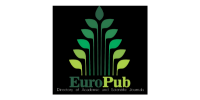Prevalence of SARS-CoV-2 antigen among Dawadmi applied medical science college students through Rapid antigen test.
DOI:
https://doi.org/10.62752/4ag5xx35Keywords:
Prevalence; SARS-CoV-2 & Rapid antigen test.Abstract
Introduction: Severe acute respiratory syndrome coronavirus 2 (SARS-CoV-2) represent major challenges for health care workers whom directly contact with the infected persons. Objective: This study aimed to assess presence of antigen using oral and nasal rapid test. Methods: Subjects and Setting: All female students of Dawadmi Applied Medical Science College who were willing to participate in the study. Design: Cross-sectional design. Results; table 1: There was 53.1% from subjects were aged 21-23 and (60.9%) in medical laboratories. Respectively in Figure one: More than three third of subjects have not any hereditary disease (79%) and in figure two; the majority don't receive any medication for a continuous period (92). In Table 3; 60% of them don’t catch Covid before, 93% took Corona virus vaccine and 71.5% took three doses of the Corona virus vaccine. 86.6% of them wear aware of the nature of the virus and contact with the infected person as a method of transmission reported by 50.3%. In Table 4; 60.3% know the World Health Organization’s announcement about pandemic. In Table 5; Majority of them washed their hands regularly with soap and water for at least 20 seconds (90.5%), 92.2% adhered to preventive measures if they experienced symptoms associated with Covid-19, (97.8%) from them staying away from those infected with the disease and 96.6% were negative for virus antigen analysis. Conclusion: Because of the low incidence CoV-2 Antibodies among the studied subjects the study hypothesis was accepted. Recommendations: Educational intervention covering all preventive practice aspects should be conducted with continuous screening to discover new cases to provide effective intervention and decrease disease incidence.
Additional Files
Published
Issue
Section
License
Copyright (c) 2025 Pharmacytalk2us

This work is licensed under a Creative Commons Attribution-NonCommercial 4.0 International License.











